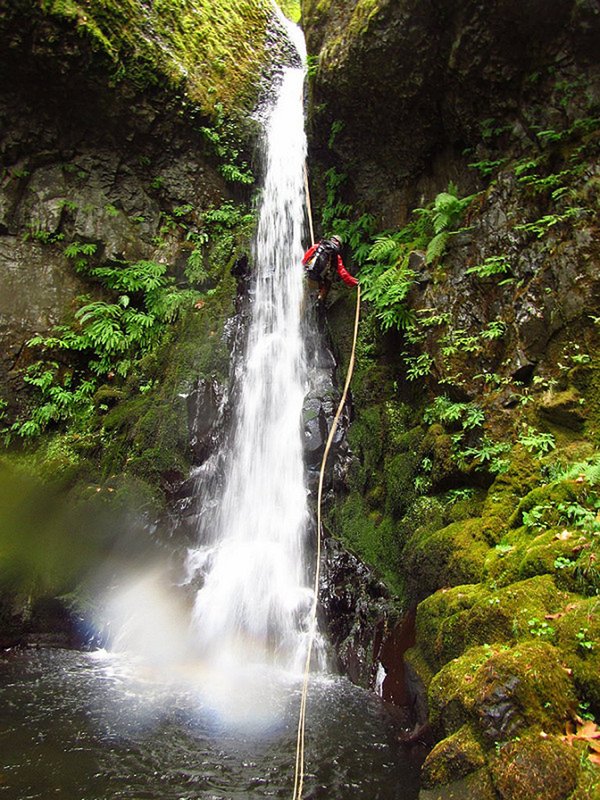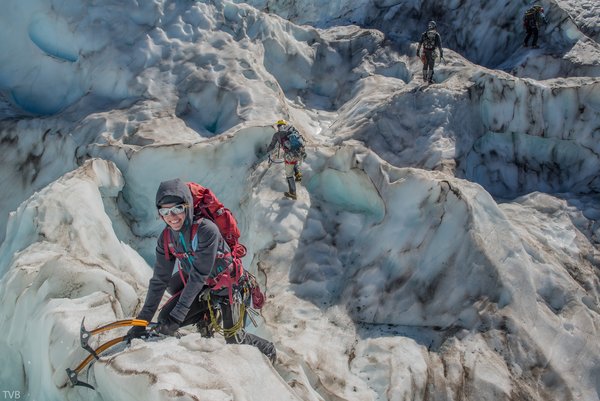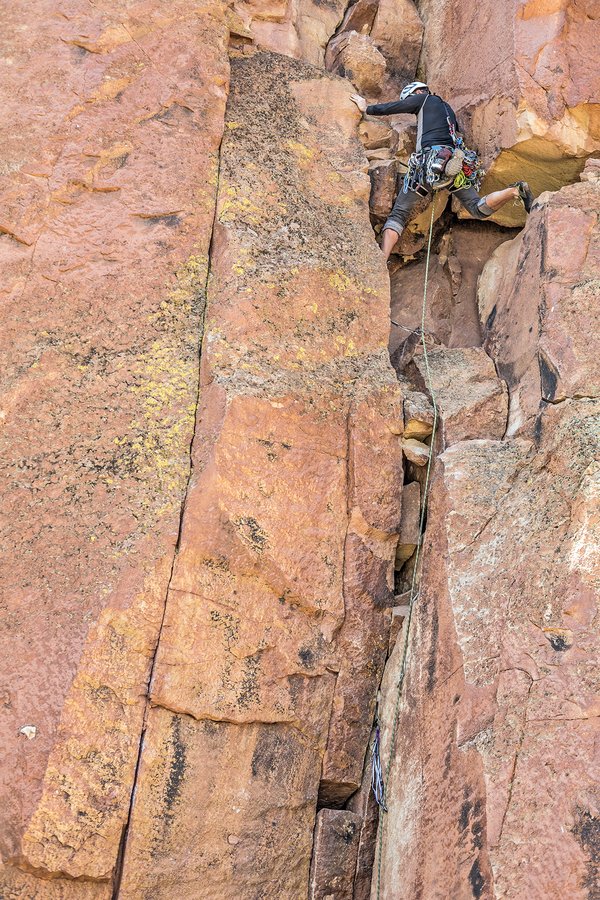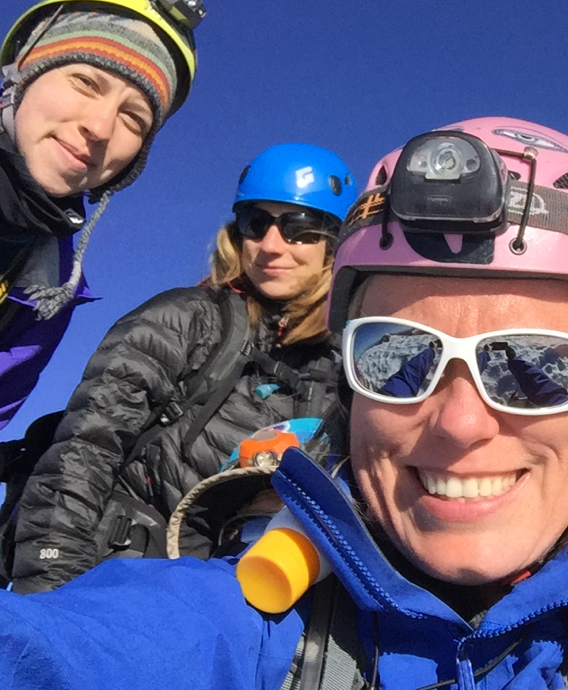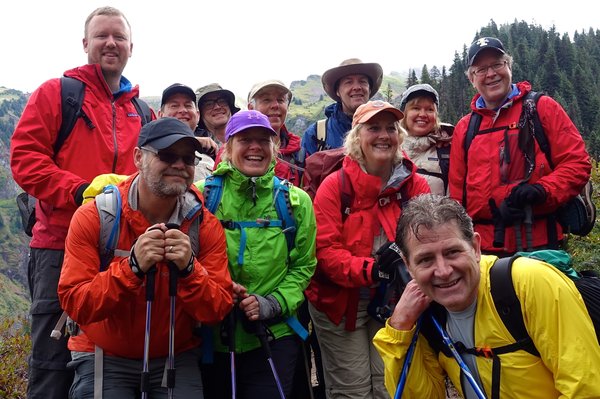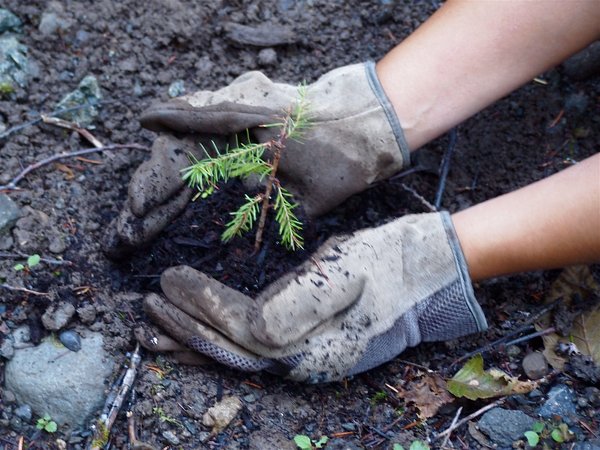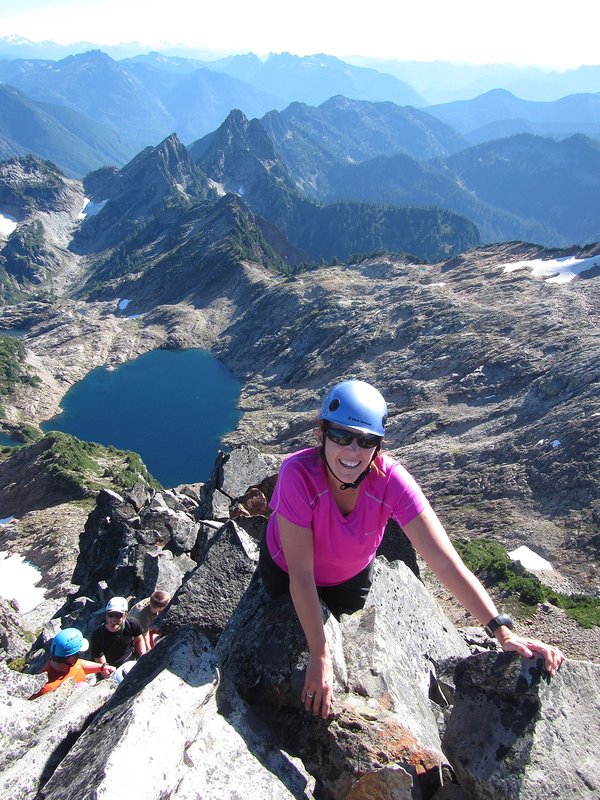Activity Notes
Link to printable prospectus for both days.
Start Time:
Instructors = 7:15 AM
Students = 8:00 AM
The following are the minimum expectations each student should meet by the end of the session:
- Belay: Practice belaying a follower using a belay device on the harness (redirected through anchor)
- Belay: Practice belaying a follower using a belay directly from the anchor using an auto-blocking belay device
- Rescue: Practice lowering a climber from a loaded auto-blocking belay device
- Rescue: Practice escaping a belay
- Gear Anchors: Practice building top rope and lead belay anchors using trad gear. Understand what types of cracks work for each kind of trad gear
- Natural Anchors: Practice building top rope and alpine rappel anchors using natural protection. Understand how to identify, inspect, and rig natural protection
- Fixed Lines: Understand how to appropriately protect low to moderate angle terrain using a fixed line and how the forces change as direction of pull/fall changes.
Trad Gear Anchor Station: ALL anchors will be inspected by a Climb Leader/ AR grad before EACH rappel. NO EXCEPTIONS
___ Practice placing each primary style of trad gear and have placements critiqued
___ Build a dynamically-equalized anchor using 3 or 4 pieces of trad gear.
___ Discuss scenarios where this type of anchor is most appropriate and when this type of anchor may not be the best choice
___ Build a statically-equalized anchor using 3 or 4 pieces of trad gear.
___ Discuss scenarios where this type of anchor is most appropriate and when this type of anchor may not be the best choice
___ Modify your statically equalized anchor so that it is multi-directional (resists upward and downward forces) and have it critiqued
Natural Pro Rappel Anchor Station: ALL anchors will be inspected by a Climb Leader/ AR grad before EACH rappel. NO EXCEPTIONS
___ Rig a simple rappel anchor using boulders, blocks, chockstones, horns, or chickenheads and have it critiqued.
___ Rig a simple rappel anchor using trees, shrubs, or bushes and have it critiqued.
___ Rig a simple alpine rappel anchor using a tree, boulder or horn using cord, webbing, or slings. Discuss its pros and cons with your assistant and alter/improve if necessary.
___ After the above anchor passes inspection from an AR grad or climb leader, perform BARK and rappel off your own anchor while ostentatiously chortling one of the following: On Rappel!!! Yee haw!!! Órale!!! or Yippee Ki-Yay ***!!!
Belay & Lower Station
___ From the top of a pitch, belay and lower from the harness, redirected through the anchor.
___ From the top of a pitch, belay off the anchor using an auto-blocking belay device.
___ Practice converting a loaded auto-blocking belay device to lower using a series of Munter/Mules and appropriate backup systems.
Escape the Belay Station
___ Inspect the ground anchor and improve it if necessary.
___ Set up a top rope belay then escape the belay keeping an open system at all times.
___ Lower from Munter on anchor using appropriate back up
Moderate Terrain Fixed Line Station
___ In teams of 2 or 3, collaboratively build a fixed line appropriate for getting a BCEP team through moderate 4th class terrain (a fall is unlikely but could be deadly)
___ Use multi-directional anchors on both ends (one Trad gear, one natural pro if possible)
___ Discuss and understand how the force applied to the anchor changes depending on situation (leader falls before placing first piece, leader or follower falls in between pieces, last person falls just before reaching anchor, etc).
___ Discuss and understand how the first person and the last person are both lead climbing, what those risks entail, and how to mitigate those risks.
___ Discuss and understand where to put more experienced climbers and where to put less experienced climbers (in relative climbing sequence) in order to maximize team safety.
RULES FOR THE WEEKEND:
- ALL anchors will be inspected by a Climb Leader/ AR grad before EACH use.
- Helmets will be worn at all times during the field session.
- Personal Protection will be used whenever you are within a body's length of an edge.
- If you need to leave please check with the coordinator before you do so. - Everyone will sign in and sign out.
- PRINT & BRING PROSPECTUS w/ pen/pencil for Instructor sign-off & time stamp
- All rappels will be backed up with either an auto-block method or a fireman's belay.
- Keep an eye out for poison oak and ticks (Technu is a preventative)
- Please note there will be no scheduled lunch breaks. Eat & drink between stations.
SAFETY:
- Horsethief is known for loose rock and rocks have fallen from commonly climbed routes.
- Check and recheck all anchor placements for rock soundness.
- Do NOT use single crack anchor setup in situations where you cannot see if the rock is at least a large refrigerator size.
- Students and Leaders alike are expected *in real time* to voice safety concerns.
- If needed, call the session coordinator (phone number atop prospectus).
Carpool Sign-up: There is a 20 vehicle limit and heavily enforced by the WA state park rangers. Additional parking is at Crawford Oaks Trailhead and at the Columbia Hills State park (see links below). Highway parking no longer allowed.
REQUIRED PERMIT: Discover Pass -- Annual pass: $30 One-day pass: $10 Cash or Check at trailhead
Horsethief Butte Parking Lot
Overflow Parking Lot A
Overflow Parking Lot B
Student Gear List (for the weekend)
Instructor Gear List (for the weekend)
HARASSMENT POLICY:
The Mazamas does not condone or tolerate harassment in connection with any of its programs or activities. The Mazamas is committed to maintaining an environment of respect for its members and everyone who participate in our activities, free of harassment of any kind including harassment based on sex, race, national origin, religion, age, disability, sexual orientation, or other factors, which do not affect the safety of the participants in Mazamas activities.
This policy applies to actions by any member or participant toward another, including in the capacity of a leader, instructor, volunteer, employee, or officer. Anyone who believes he or she has experienced harassment should report the conduct to our staff using the incident reporting form (link below). Persons who violate this policy may be denied the opportunity to participate in Mazama activities and/or may have their membership status restricted or terminated.

